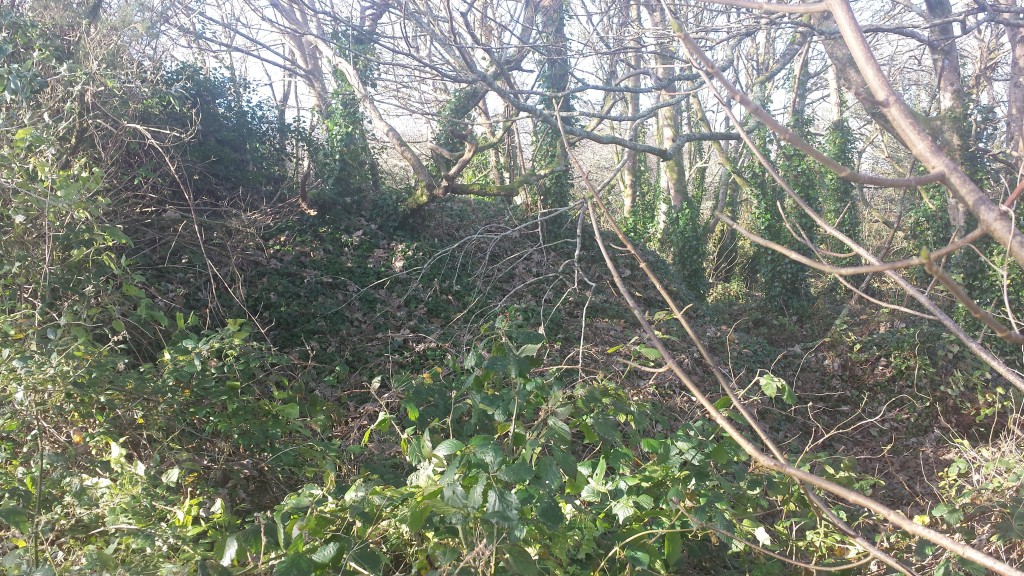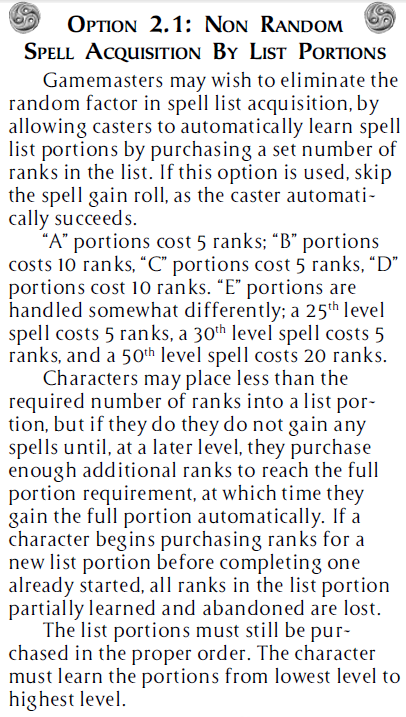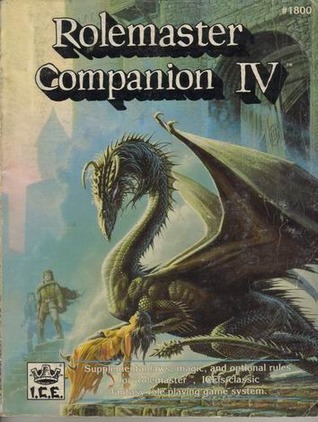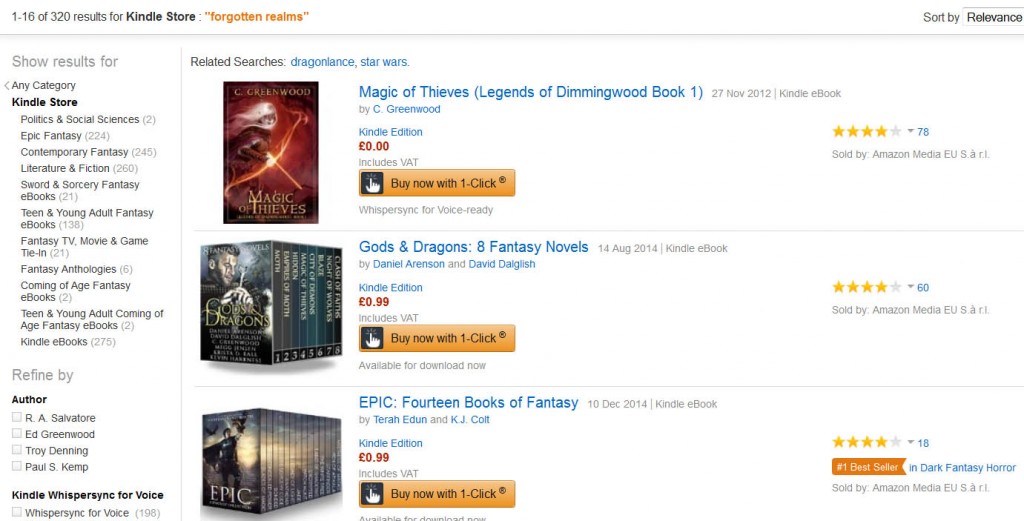Khelben “Blackstaff” Arunsun is a major player in the culture of Waterdeep. He is described in the source material as interfering in events often years into the future. To this end ‘my’ Blackstaff is going to be a Seer.
The sourcebooks describe him as just a ‘magic user’ but Rolemaster gives you plenty of different types of magic user to choose from. There are three realms of magic. The Eassence is Mystra’s Weave, Channeling is power derived from your god or deity and mentalism is that inner magic controlled by the mind of the caster. We are in Jedi territory with the mentalists!
Eassence is proably the most overtly powerful magic, this is where you will find your fireballs and lightning bolts and such. The three core magic users of this realm are the magician, illusionist and alchemist.
Channeling includes your cleric, animist (druidic type) and the healer. All Channeling casters have access to some level of healing magic with Clerics being able to raise the dead and healers instantly healing the wounded by taking the injury on themselves and then healing themselves with their magic.

Mentalists focus on the mind and bodily control for the most part. Their magic rarely effects more than one target at once and can be more subtle. The mentalists have a healer called a Lay healer and a Seer who can work with past and future knowledge. This is where I want to put Khelben Arunsun.
Don’t think for one second that a Seer is a push over. Mentalists are great ones for Telekinesis and he can easily pick up objects and throw them across the room with devastating effect (don’t think vase of flowers, think ripping up a cobble stone and throwing that 300′).
There were more options for my Khelben. In addition to those nine options Rolemaster has three ‘hybrid’ magic users that straddle different realms to give us a sorcerer, mystic and astrologer. These are really fun to play and Mystic was a really strong contender when considering this NPC. In Rolemaster terms Khelben is 39th level which does give a lot of scope.
It was while I was developing Khelben that it occured to me that although creating NPCs is a great way to learn the basics of any roleplaying game, for a new game master creating a 39th level character is not the best way to start. I would strongly recommend creating a fist full of lower level characters before tackling anything like these more powerful NPCs.
I would also say for NPCs don’t fall into the trap of always going for Magicans and Clerics as stock magic users. If you mix it up a bit and use the entire spectrum then you players will never know quite what is going to hit them next.



 When you are converting the significant NPCs from the Forgotten Realms source materials then as a rule of thumb you should multiply all levels by about 1.5 so that a 12th level fighter in the D&D rules such as Helm Dwarf-friend, Master of Sundabar would be an 18th level warrior in Rolemaster. For a more powerful game you would make the NPCs higher level but as a rule x1.5 works pretty well.
When you are converting the significant NPCs from the Forgotten Realms source materials then as a rule of thumb you should multiply all levels by about 1.5 so that a 12th level fighter in the D&D rules such as Helm Dwarf-friend, Master of Sundabar would be an 18th level warrior in Rolemaster. For a more powerful game you would make the NPCs higher level but as a rule x1.5 works pretty well.



